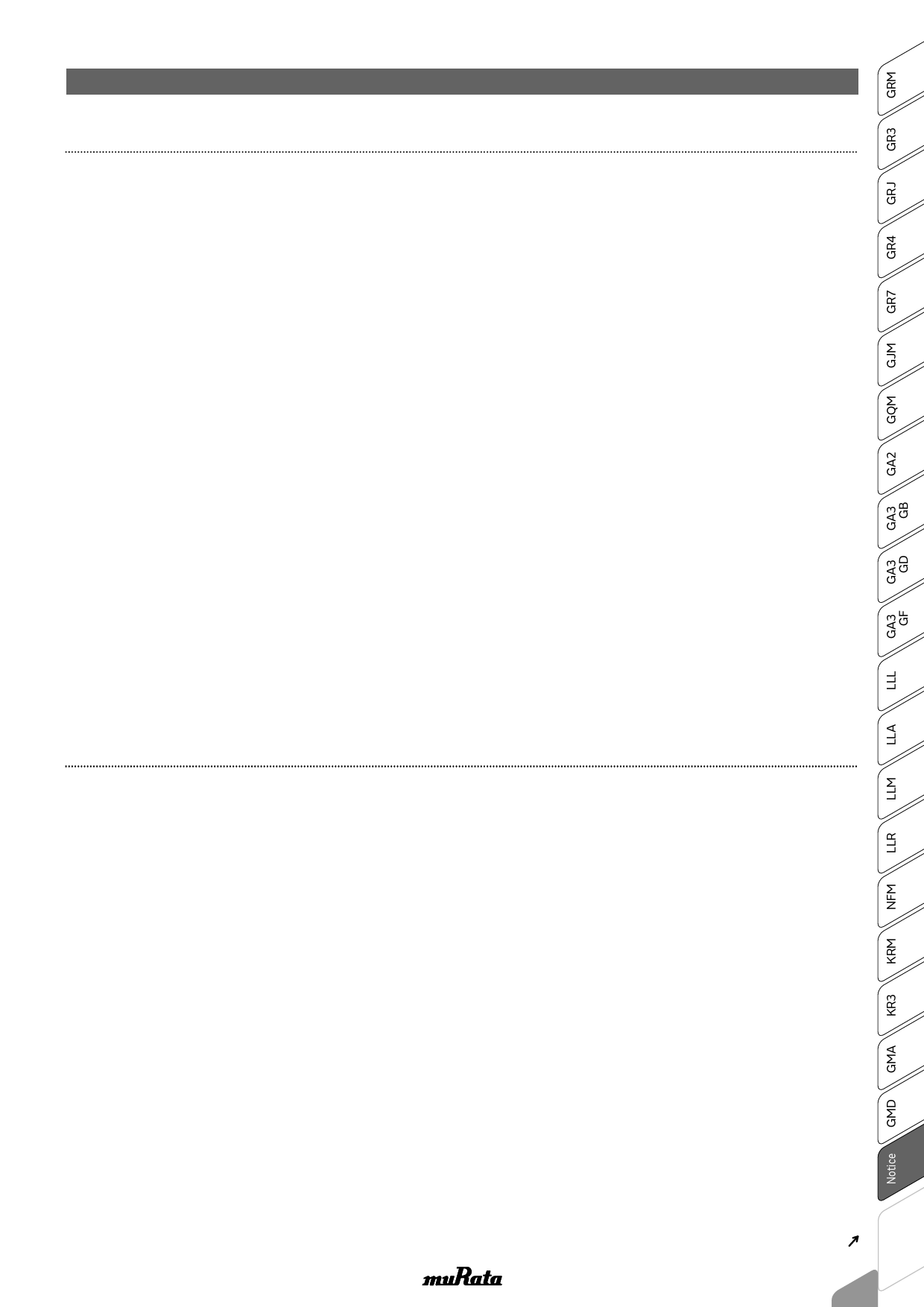LLL317R71H103MD01K 데이터 시트보기 (PDF) - Unspecified
부품명
상세내역
일치하는 목록
LLL317R71H103MD01K Datasheet PDF : 296 Pages
| |||

!Note • Please read rating and !CAUTION (for storage, operating, rating, soldering, mounting and handling) in this catalog to prevent smoking and/or burning, etc.
• This catalog has only typical specifications. Therefore, please approve our product specifications or transact the approval sheet for product specifications before ordering.
Notice
C02E.pdf
Nov.27,2017
Rating
1. Operating Temperature
1. The operating temperature limit depends on the capacitor.
1-1. Do not apply temperatures exceeding the maximum
operating temperature.
It is necessary to select a capacitor with a suitable
rated temperature that will cover the operating
temperature range.
It is also necessary to consider the temperature
distribution in equipment and the seasonal
temperature variable factor.
1-2. Consider the self-heating factor of the capacitor.
The surface temperature of the capacitor shall not
exceed the maximum operating temperature including
self-heating.
2. Atmosphere Surroundings (gaseous and liquid)
1. Restriction on the operating environment of capacitors.
1-1. Capacitors, when used in the above, unsuitable,
operating environments may deteriorate due to the
corrosion of the terminations and the penetration of
moisture into the capacitor.
1-2. The same phenomenon as the above may occur when
the electrodes or terminals of the capacitor are subject
to moisture condensation.
1-3. The deterioration of characteristics and insulation
resistance due to the oxidization or corrosion of
terminal electrodes may result in breakdown when the
capacitor is exposed to corrosive or volatile gases or
solvents for long periods of time.
3. Piezo-electric Phenomenon
1. When using high dielectric constant type capacitors in AC
or pulse circuits, the capacitor itself vibrates at specific
frequencies and noise may be generated.
Moreover, when the mechanical vibration or shock is
added to the capacitor, noise may occur.
Soldering and Mounting
1. PCB Design
1. Notice for Pattern Forms
1-1. Unlike leaded components, chip components are
susceptible to flexing stresses since they are
mounted directly on the substrate.
They are also more sensitive to mechanical and
thermal stresses than leaded components.
Excess solder fillet height can multiply these stresses
and cause chip cracking. When designing substrates,
take land patterns and dimensions into consideration
to eliminate the possibility of excess solder fillet
height.
1-2. There is a possibility of chip cracking caused by PCB
expansion/contraction with heat, because stress on
a chip is di erent depending on PCB material and
structure. When the thermal expansion coe cient
greatly di ers between the board used for mounting
and the chip, it will cause cracking of the chip due to
the thermal expansion and contraction.
When capacitors are mounted on a fluorine resin
printed circuit board or on a single-layered glass
epoxy board, it may also cause cracking of the chip
for the same reason.
<Applicable to NFM Series>
1-3. Because noise is suppressed by shunting unwanted
high-frequency components to the ground, when
designing a land for the NFM series, design the
ground pattern to be as large as possible in order to
better bring out this characteristic.
As shown in the figure below, noise countermeasures
can be made more e ective by using a via to connect
the ground pattern on the chip mounting surface to a
larger ground pattern on the inner layer.
Continued on the following page.
283